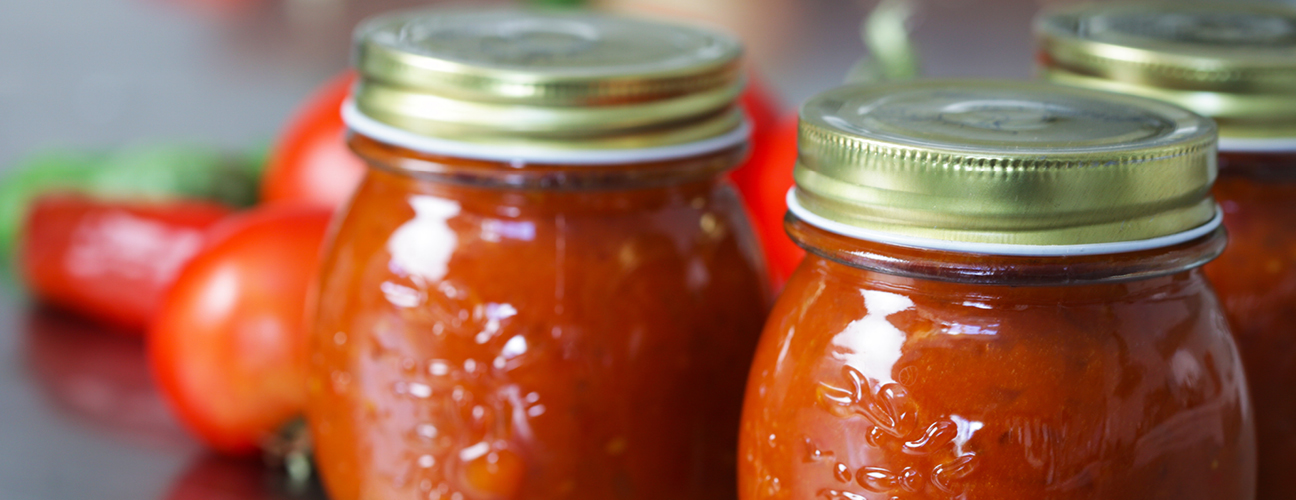Our guide to … chutney and relish

Late summer and early autumn is harvest time in Tasmania, and with any luck you have loads of tomatoes, zucchinis, apples or stone fruit from your garden, a relative’s garden – or your local Hill Street store – which are just perfect to be made into a chutney or relish. Get bottling with our guide.
You can’t argue with the magical uplift a rich and spicy chutney or relish gives to a dish, long after its original ingredients are out of season. Here’s how to put up a few jars in your own pantry, to dip into in the months to come.
There’s a bit of conjecture about the difference between chutney and relish. Tasmania’s expert on all things bottled, Sally Wise, says that chutneys are made from finely sliced or chopped fruit and vegetables, cooked very slowly to allow a smooth texture and rounded flavour to develop. Relishes, on the other hand, are cooked for a shorter time, with the resultant relish chunkier and more sharply flavoured than a chutney.
Some people argue that a chutney will always contain mainly fruit or a mixture of fruits, and relishes are generally made of vegetables, and usually one variety. Then, let’s not get started as to whether tomatoes are regarded as fruits rather than vegetables for the purposes of this argument!
Definitions aside, chutneys and relishes are a great way to deal with a glut of something you have growing in the garden, or when fruit and tomatoes are cheaper at the height of summer.
The word “chutney” comes from the Hindi word “chatni”. Chatni is used in Indian cuisines as a condiment, and is made from fruits, vinegar, sugar and spices. It was brought to England in the days of the Raj and the spiciness considerably reduced for English palates. It’s generally used as a sauce accompanying meats and in Indian cuisine to accompany anything from deep fried snacks to curries.
Tips for great chutneys and relishes
- Use only fruit and vegetables at the peak of their freshness. Cut off any blemishes and reject any which are past their best. If not, you will be introducing mould or bacteria and the whole batch may spoil.
- Wash all fruits and vegetables and pat dry.
- Don’t rush. Let the onions break down with the vinegar and spices for about 20 minutes, and then add your fruit.
- Chutneys especially require a long slow cooking time so let them simmer on low and stir every now and then to stop anything catching on the bottom of the pan. A good chutney will take at least two hours to cook, and should be thick without any vinegary liquid separating out when you stir it. A wooden spoon dragged through should leave a clear line.
- Always jar your chutney in sterilised jars. This is easy to do in your own oven – read this to learn how.
- Once the chutney or relish is in the jar shake the jar a little and gently tap it on the bench to make sure the chutney fills the jar and there are no air pockets.
- Label and store in a cool dark place. Your recipe should tell you how long your chutney or relish should rest before eating. Eating it too soon might result in too vinegary a chutney or relish. They need time to mellow.
Here are some recipes to try from Hill Street’s recipe collection:
Comice pear and apple chutney
Quick tomato chutney
Fresh peach chutney
Spiced mango chutney
Spiced pineapple chutney
Mango and apple chutney

